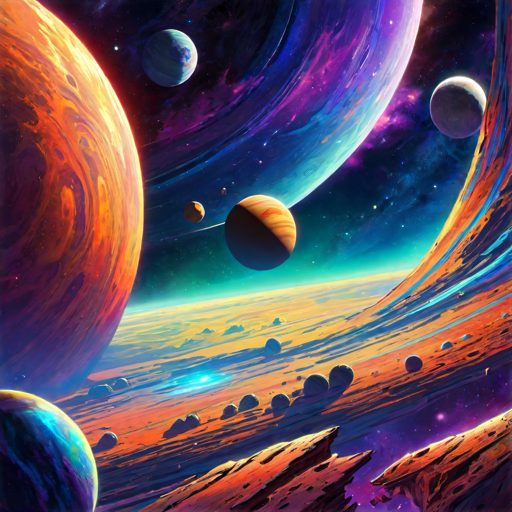
Planetary Science: The Shape of Space!
Recommended for Middle Grades
In planetary science, people often wonder why planets and moons are mostly round. This question is important in science and interesting to many. It helps us understand basic rules of the universe, using observations from space and science laws.
Listen to the news
Space Secrets
1. Why Celestial Bodies are Round:
- Using Telescopes: Scientists use telescopes on Earth and in space. They see that many things like planets and moons in space are round.
- Gravity’s Role: Gravity makes these space objects round. An astrophysicist at NASA, Anjali Tripathi, explains this. ‘Self-gravity’ is when an object’s own gravity pulls it into a ball shape.
2. How Space Objects Formed After the Big Bang:
- After the Big Bang: The universe started with a big event called the Big Bang, about 13.8 billion years ago. After that, space had big clouds of dust.
- Dust Coming Together: Small dust bits in these clouds hit each other and stuck together. This kept happening, making the bits bigger and bigger. The bigger they got, the more they could pull in more dust because of gravity.
3. Gravity Pulling Everything to the Center:
- Gravity Pulls to the Center: An astronomer, Bruno Merín, explains this like water going down a sink. In space, all parts of a forming planet try to get to the center.
- Finding Balance as a Sphere: These space objects move their stuff around until everything is as close to the center as possible. The best shape for this is a ball or sphere.
4. Why Some Planets are Almost Perfectly Round:
- Slow-Spinning Rock Planets: Planets like Mercury and Venus spin slowly. They are made of rock and are almost perfect balls. Ice planets are also nearly perfect balls because ice spreads out evenly.
- Some Planets are Not Perfect Balls: Big gas planets like Jupiter and Saturn are not perfect balls. They spin fast, so they bulge at the middle. Earth also has a small bulge because it spins, making it not a perfect ball.
5. Why Some Space Objects are Not Round:
- Asteroids and Comets: Not everything in space is round. Things like asteroids and comets can be all sorts of shapes. They get these shapes from hitting other things and spinning.
- Moons Like Potatoes: Some moons, like Mars’ moon Phobos, are shaped like potatoes. Out of many moons, only about 20 are round. The rest are different shapes. This is because they are not big enough to pull themselves into a round shape with their gravity.
![]()
Curious Times is a leading newspaper and website for kids. We publish daily global news aligned to your learning levels (also as per NEP 2020): Foundational, Preparatory (Primary), Middle and Senior. So, check out the News tab for this. We bring kids’ favourite Curious Times Weekly newspaper every weekend with top news, feature stories and kids’ contributions. Check out daily JokesPoke, Tongue Twisters, Word of the Day and Quote of the Day, kids need it all the time.
ME – My Expressions at Curious Times is your place to get your work published, building your quality digital footprint. And it is a good way to share your talent and skills with your friends, family, school, teachers and the world. Thus, as you will step into higher educational institutes your published content will showcase your strength.
Events, Quizzes and Competitions bring students from over 5,000 schools globally to participate in the 21st-Century themes. Here schools and students win certificates, prizes and recognition through these global events.
Sign-up for your school for FREE!
Communicate with us: WhatsApp, Instagram, Facebook, Youtube, Twitter, and LinkedIn.
0 (Please login to give a Curious Clap to your friend.)
